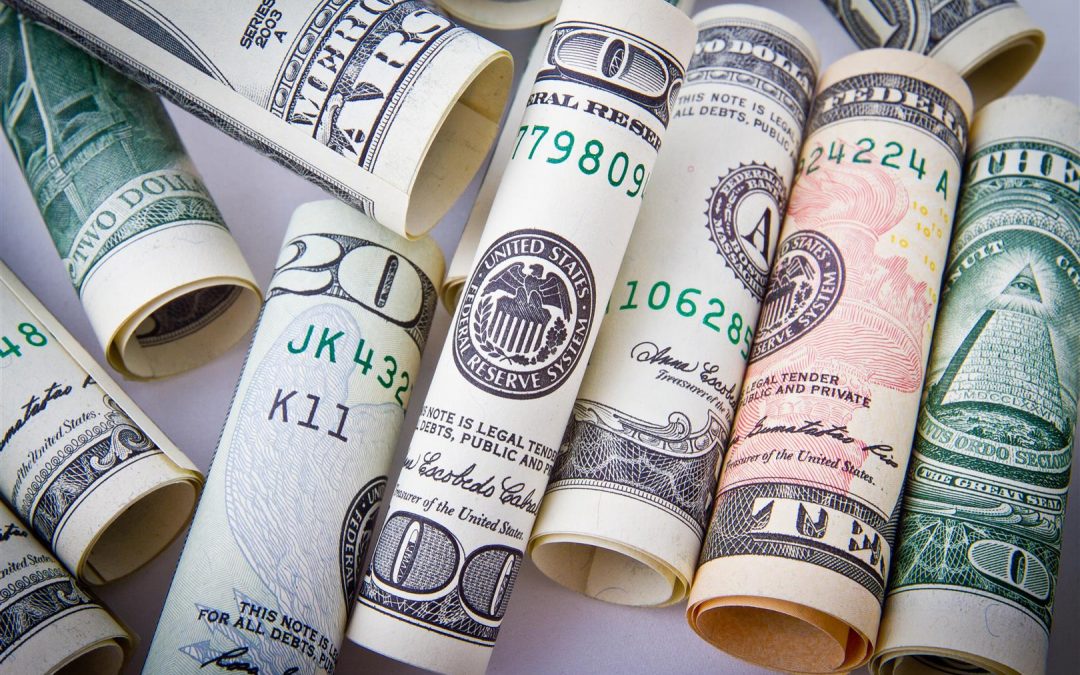Originally posted October 11, 2018. Last revised January 24, 2020.
During bear markets, watching your portfolio decrease in value even if you’re buying in stages can be disconcerting. To ease my mind against watching the decreasing value of my positions during downtrends, I find that owning dividend-yielding stocks provides some comfort as I can at least rationalize that my numbers of shares are increasing.
What is a dividend-yielding stock?
Some companies will pay out a portion of their revenue to shareholders as a dividend, much in the same way a bank will pay interest based on your account balance.
Not all companies pay dividends with those who do paying different amounts at different intervals. Typically, companies pay dividends each quarter (four times a year), however some stocks will pay once a year and others will pay out special one-time dividends.
How do you reinvest dividends?
You may have heard the recommendation that you should “reinvest your dividends.” This means you use the dividends you receive to buy additional shares of the stock rather than taking the dividends as cash.
This advice can seem difficult to execute since many brokerages charge at least $4.95/trade and the dividends you receive may be less than that amount. There’s a fix for this: Dividend Reinvestment Programs (called DRiPs).
Most brokerages offer DRiPs free-of-charge. You simply tell your brokerage that you’d like to enroll all eligible dividend-yielding positions in DRiP and the brokerage will pay your dividends as fractional shares of the respective stock rather than cash.
I’ve found you can often easily request to be enrolled in DRiP via email or the chat support offered by brokerages like Charles Schwab. Most times, you don’t even need to call to enroll in DRiP. Many brokerages will even allow you to set your account so all future stocks you purchase that are DRiP-eligible automatically enroll.
Take Dividends as Stock, Not Cash.
Let’s use Boeing (BA) as an example. At $367 per share, Boeing offers a 1.77% dividend. If you owned 10 shares of Boeing, you would receive $64.96 a year in dividends (10 shares x $367 = $3670 x 1.77% = $64.96).
Assuming Boeing’s stock price and dividend didn’t change, if you owned Boeing for ten years, you would receive $649.59 if you took the dividends as cash.
However, if you took the dividends as fractional shares, your dividend would be worth $703.85, 8.35% more than taking the dividends as cash over the same time period. How? Through the magic of compounding interest.
By taking the dividends as fractional shares, you earn dividends each year on those fractional shares as well as your original position.
Here’s what it looks like each year (we’re calculating it as if the dividend was paid out once annually – you’d actually earn slightly more than this since Boeing pays its dividend quarterly):
Start: 10 shares x 1.77% = 0.177 shares
Year 1: 10.177 shares x 1.77% = 0.180 shares
Year 2: 10.357 shares x 1.77% = 0.183 shares
Year 3: 10.540 shares x 1.77% = 0.187 shares
Year 4: 10.727 shares x 1.77% = 0.190 shares
Year 5: 10.917 shares x 1.77% = 0.193 shares
Year 6: 11.110 shares x 1.77% = 0.197 shares
Year 7: 11.307 shares x 1.77% = 0.200 shares
Year 8: 11.507 shares x 1.77% = 0.204 shares
Year 9: 11.711 shares x 1.77% = 0.207 shares
Year 10: 11.918 shares
Your investment is now worth $4,373.91 (11.918 shares x $367 per share) instead of the original $3,670.00 purchase price (10 shares x $367 per share). That’s a 19.18% gain without the stock price even going up!
What are some dividend-yielding stocks?
Many consumer products stocks such as Johnson & Johnson (JNJ), Proctor & Gamble (PG) and Pepsico (PEP) pay dividends of 2-4% annually, however since consumer products stocks don’t typically increase in value as fast as growth stocks, they may not be as appealing to investors.
Here are some of Irk’s current holdings that you might be surprised to learn actually pay dividends:
- Apple (AAPL)
- Boeing (BA)
- Citigroup (C)
- Disney (DIS)
- Dow (DOW)
- JP Morgan (JPM)
- Logitech (LOGI)
- Nike (NKE)
- Nvidia (NVDA)
- Xilinx (XLNX)
Keep in mind that the dividend percentage you receive is based on the stock’s value at the time you buy the stock. Also, companies may increase and decrease the amount of their dividend over time depending on the company’s performance.
Finally, many professional advisers warn against stocks with high dividend yields – typically in excess of 6% – as companies with such high dividends are often experiencing financial issues which may result in the company cutting its dividend in order to accommodate for its financial issues.
You can find other dividend-yielding stocks using free research websites like Yahoo Finance or Google Finance.
Although a stock’s dividend should never be the sole reason you buy a stock, a good stock idea that happens to pay a dividend can certainly provide some solace in times of market distress!

